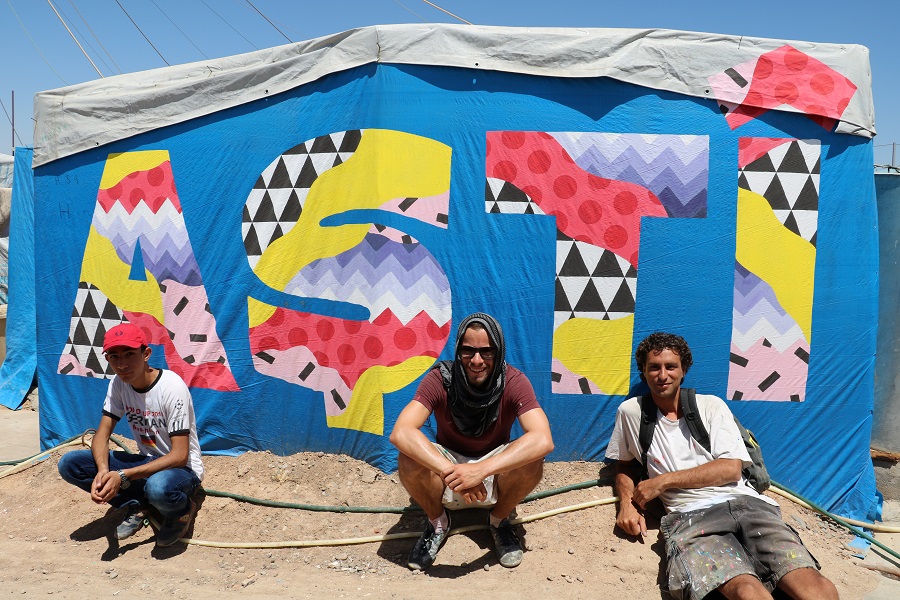Administration is probably the first contact point anyone has in the UN Refugee Agency (UNHCR). In reality, everything we do has a sort of administration process linked to it. When one of us joined UNHCR in November 2007, an era that was already embracing Facebook and long past the early days of the internet, we were handed over a few typewriters to begin our work. This is unfortunately not a joke, but a reflection on how long it can take organisations to catch-up to the real world. Coming from the private sector, this was a bit of a shock to say the least. I witnessed these same feelings wash over the faces of the even younger new recruits who were told we had to use them to fill out separation documents as one of our first tasks. I took this challenge head-on, quickly teaming up with a few new colleagues and recreated the same form but in Microsoft Excel. I consider this my first feeling of innovation in UNHCR. Sometimes innovation is quick and boring, but it brings efficiency to a process – and to me this is the key to making our organisation and other UN agencies more innovative.
The bureaucratic state of play
Each day in admin and finance we are working with strongly controlled processes. On one hand, rules are important because they frame each step to accomplish a goal – whether that is in procurement, contracts or travel requests. These rules ensure that the processes which drive our organisation are transparent and trackable, and this is important. However, rules and regulations also need to evolve with the passing of time. We cannot allow these rules to be a burden when they are expected to add concrete value to a process. In many ways, working in administration at UNHCR is a bit like fighting against the bureaucracy itself. If these rules, which act as our guiding light, become overcomplicated or impenetrable, we can simply not be efficient. The heaviness of this workflow can become a barrier in serving the interests of persons of concern. For example, if we are not able to process a payment quickly enough, then this can directly affect the work going on in our field operations.
We are not here to argue against rules – we concretely believe that UNHCR needs guidelines, standards, and order. We need this in many aspects of our life. But we do believe that when these rules have turned into clear bureaucracy, we should seize the opportunities to improve them. Bureaucracy is a real barrier to innovation. Even if someone within the organisation has a brilliant idea, the long processes of reviewing, selecting, testing, authorising, clearing, and signing off of this solution can kill it before it even has had a chance to impact refugees. It is within this institutional structure that we need to find the space to try new things and innovate the old. The structural speed of our processes needs to catch-up with the innovations currently taking place in the field and Headquarters. The current state of play of our traditional and institutional architecture needs a facelift.
Actions for a more efficient way forward
So what would a better system look like for us? A quick answer would be: faster, simplified, agile, and more flexible.
First, it would focus more on the outcome rather than the format in which such an outcome would have to be finalised. Within UNHCR’s Innovation Service, we pride ourselves in acting quickly to respond to requests. This is something that should be mainstreamed across the organisation at all levels. Our main priority is the well being and protection of the 65 million people displaced – this level of efficiency would not only change how we work, but how we could approach challenges.
These are some areas where we can start acting on now:
- Decreasing the number of authorisation levels for administrative processes
- De-partitioning general administrative tasks such as travel requests
- Implementing a programme cycle more aligned with the needs of the field
- Identifying and prioritising processes that can reasonably be simplified
- Creating a better system for internal communication between the field and HQ
Moving into 2018, the UNHCR Innovation Service will begin mobilising around some of these areas for experimentation. While we argue that technology does not equate innovation, new technology does offer a lot of opportunities for change in administration activities. Currently, when a memo needs to be approved internally, assistants go from person to person asking for signatures to clear the memo. If we could utilise automation and shorten this approving process, colleagues would have more time to get other important work done. But all solutions don’t have to be all about tech. What if we had a corporate card that accrued all the miles from the flights the organisation is spending money on? We would be earning points and using the rewards to ensure new flights cost the organisation less overall. This would be one simple change to save the organisation quite a bit of money. Or if UNHCR were to go paperless, it would truly be a disruptive form of innovation for our institutions.
The first step for realising this change will be to admit as an organisation that we need it. We need to evolve and we need to make our backend processes and rules fit for purpose. Our call to action is to ask you to put down your typewriters and invest in big, boring, and bureaucratic innovation.
This essay was originally posted in the recently released report: UNHCR Innovation Service: Year in Review 2017. This report highlights and showcases some of the innovative approaches the organization is taking to address complex refugee challenges and discover new opportunities. You can view the full Year in Review microsite and download the publication here.

